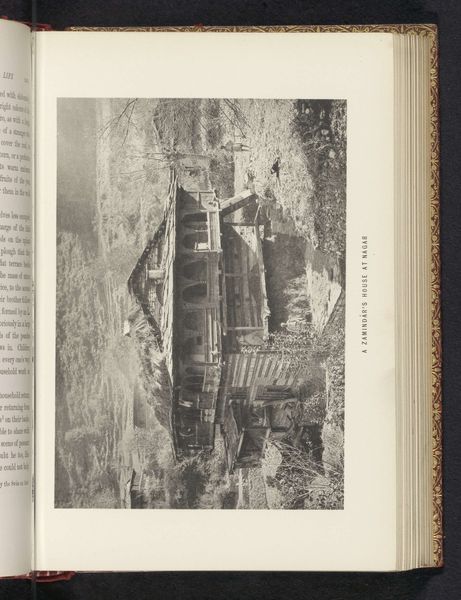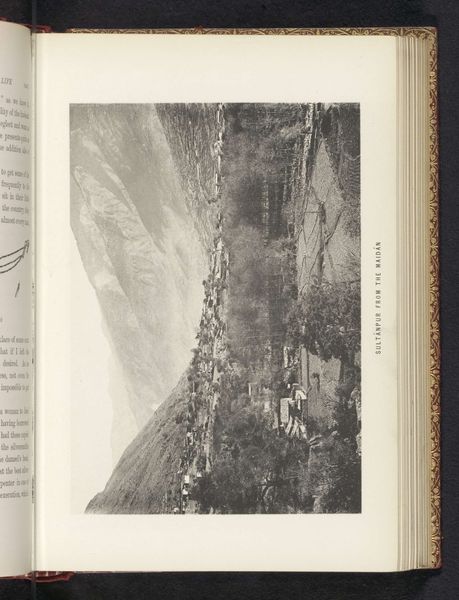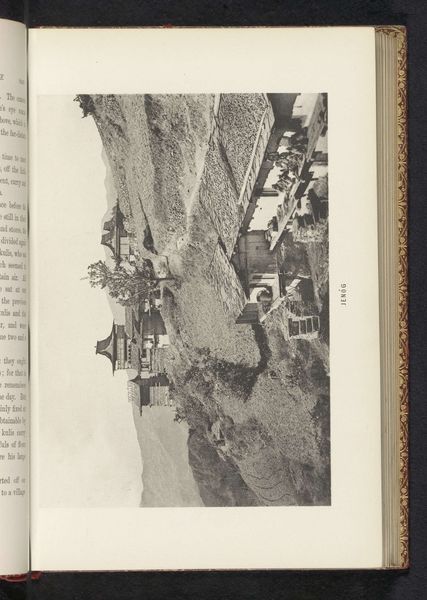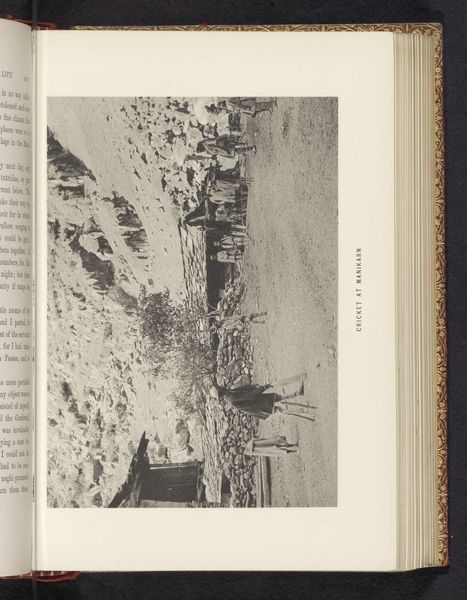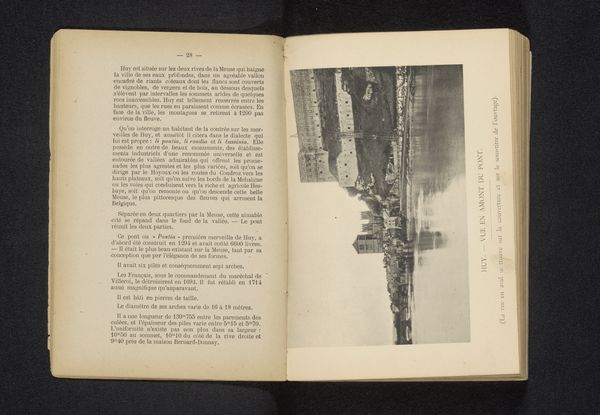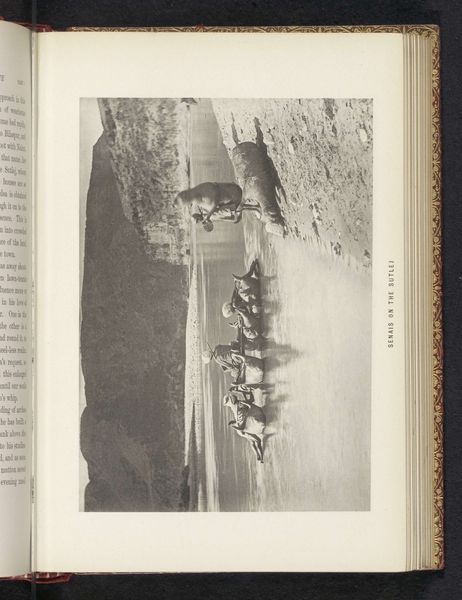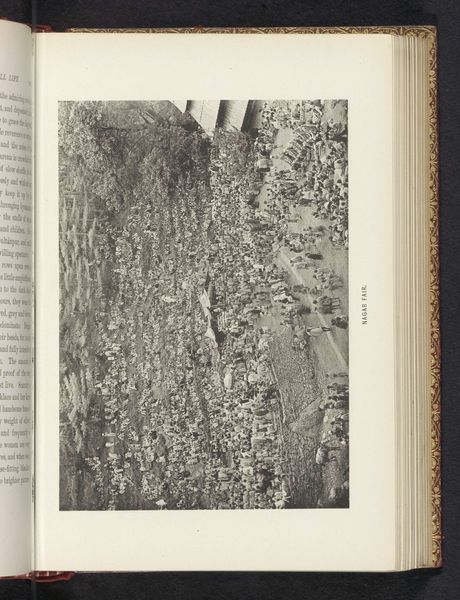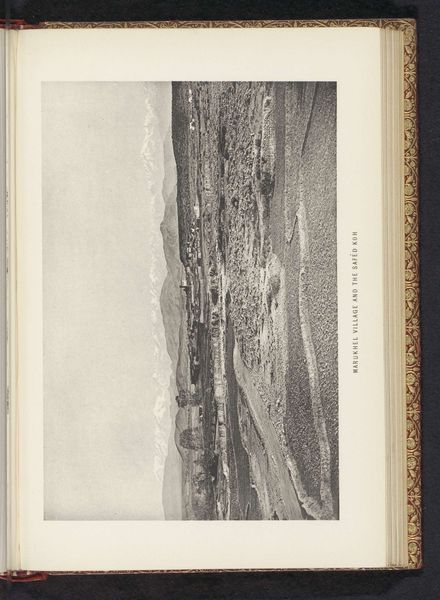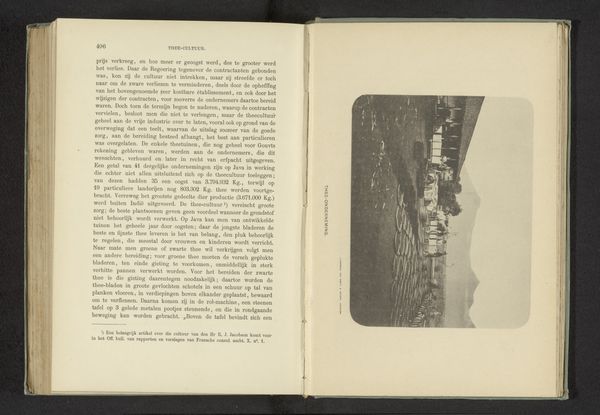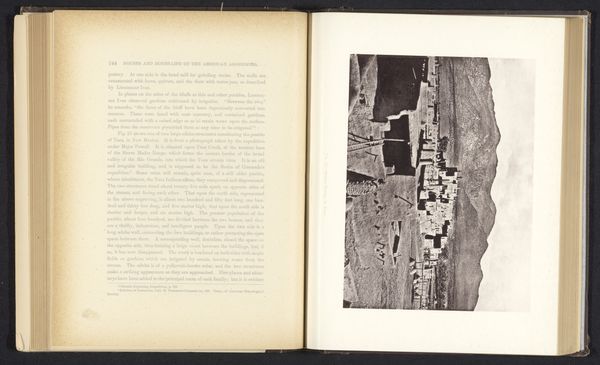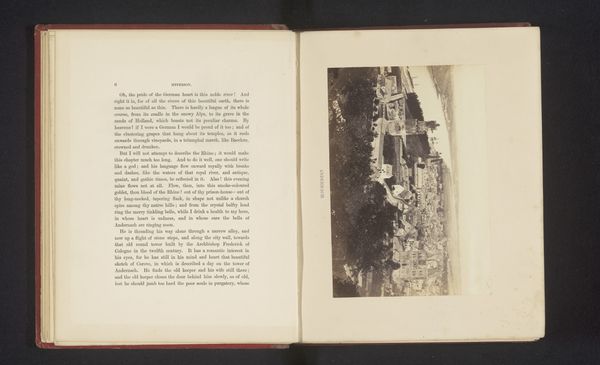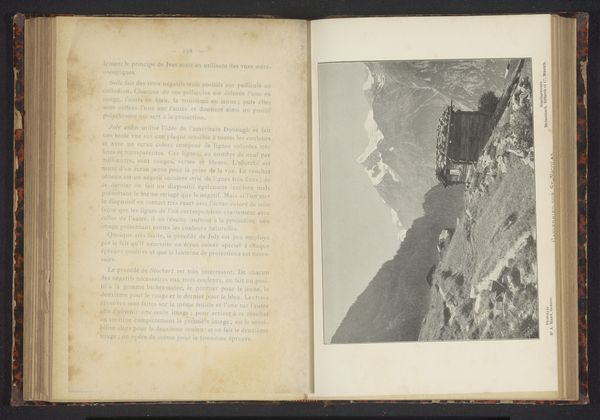
print, photography
#
16_19th-century
# print
#
landscape
#
photography
#
coloured pencil
#
orientalism
#
watercolor
#
building
Dimensions: height 120 mm, width 168 mm
Copyright: Rijks Museum: Open Domain
Curator: Looking at "The village temples at Malauna," dated to before 1895 and created by Frederick Saint John Gore, I'm struck by the granular texture of the photographic print and how the depicted forms rise majestically, and rather severe, within the illustrated page itself. Editor: It certainly has a powerful stillness. The temples almost seem to grow organically from the landscape itself. I wonder about the spiritual symbolism of these places and the activities once enacted there. What kind of memories might reside within those walls? Curator: We have to consider Gore's own perspective in crafting such memories for his audience. What does this framing and construction, and indeed, the likely labour that went into the building, suggest about the village? Editor: You’re right; the composition draws the eye upwards to the temples. We see the villagers, likely participants in some ceremony or gathering, at the base of these temples and what their garments might tell us. Are there repeated motifs? Perhaps shared clothing signifies kinship or some ritualized relation? Curator: Exactly. Note the light hitting certain areas of the temples, drawing out the material of their making – stone, wood, potentially mud-brick. We can think about trade routes and locally-sourced material, and what they might mean in this isolated geography. Editor: And even those lines suggest layers of meaning and historical usage: who built these structures, and why? Were they always used for purely sacred purposes, or did function evolve with the surrounding society? What can be inferred through the positioning of such images next to pages filled with descriptive language? Curator: Thinking about photography as a colonial enterprise, the labor involved in constructing, transporting, and using these early photographic techniques – the glass plates, the darkroom materials – reveals so much about the culture producing and consuming these images. Editor: I find myself meditating on this captured moment of time, now over a century in the past, pondering the shared cultural significance that these structures still have and considering the layers of ritual meaning layered here. Curator: Precisely, by engaging with the production we can think of new ways for looking at cultural constructions! Editor: Indeed, each glance suggests an unseen depth in what is symbolized by architectural grandeur of such striking arrangement.
Comments
No comments
Be the first to comment and join the conversation on the ultimate creative platform.
